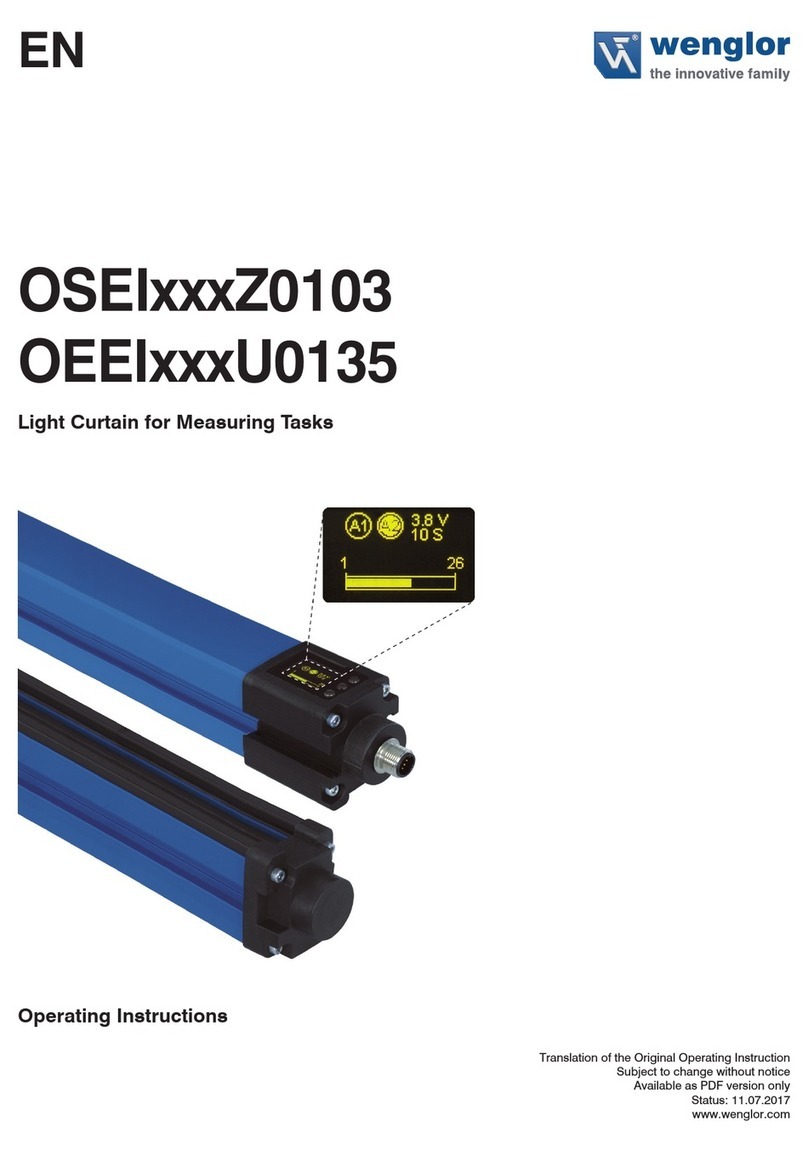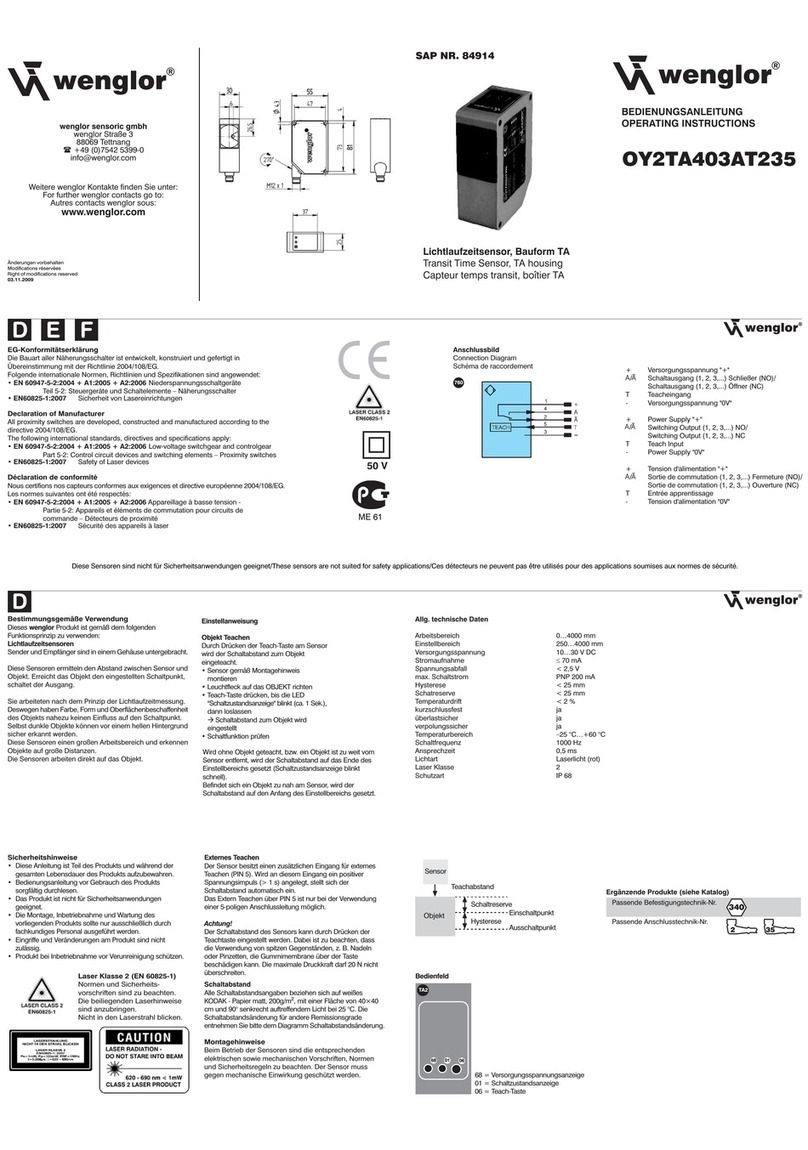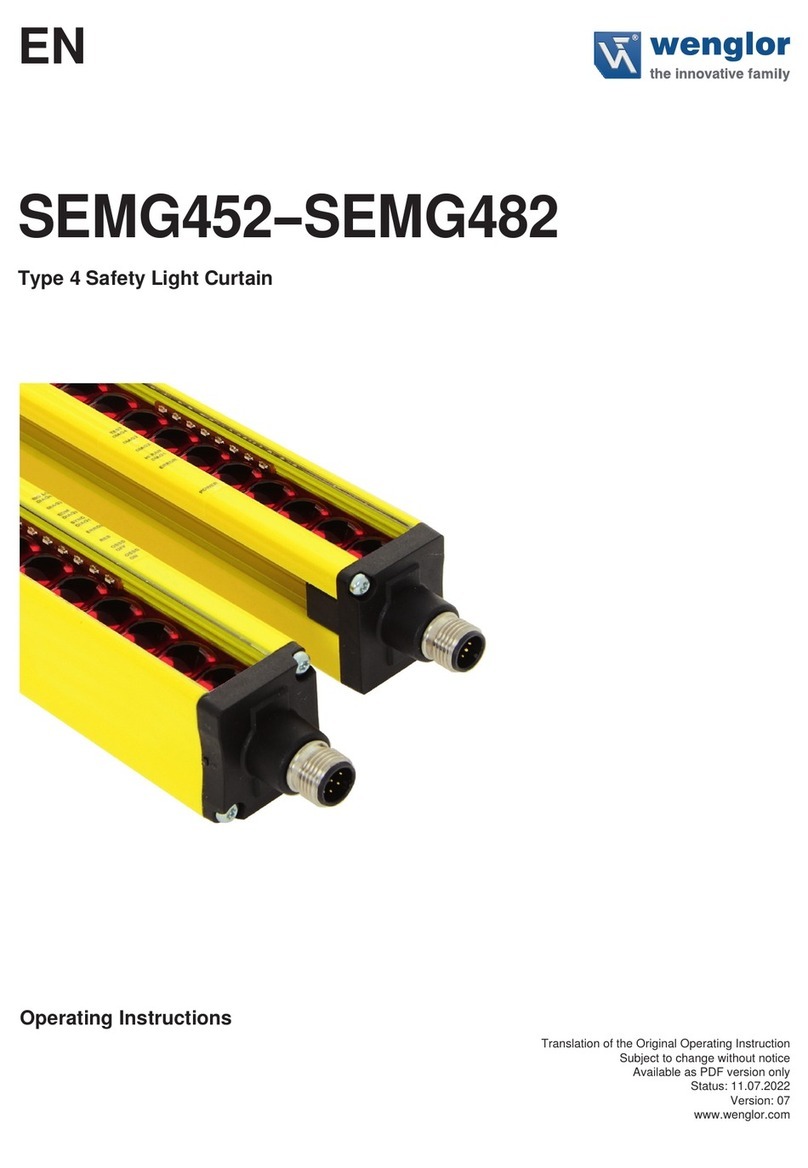
EN
2
Table of Contents
1. Introduction......................................................................................................... 4
1.1 General Information Regarding this Document ....................................................................... 4
1.2 Function and Use for Intended Purpose .................................................................................. 4
1.3 Brief Explanation of Function- and Operating Modes............................................................... 4
1.4 Explanation of symbols ............................................................................................................ 5
2. Description of the Safety Device........................................................................ 6
2.1 General ..................................................................................................................................... 6
2.2 Features ................................................................................................................................... 6
2.3 Layout ........................................................................................................................................ 7
2.4 Control and Display Elements................................................................................................... 7
2.5 Applications Examples .............................................................................................................. 8
3. Instructions for Use and Safety Precautions .................................................... 9
3.1 General Instructions for Use and Safety Precautions ............................................................... 9
3.2 Securing the Danger Zone ...................................................................................................... 10
3.3 Calculating Safety Clearance .................................................................................................. 10
3.4 Minimum Clearance to Reflective Surfaces............................................................................. 12
3.5 Avoidance of Reciprocal Influence Amongst Several Light Barrier Systems ......................... 13
4. Connection and Installation to the Machine ................................................... 14
4.1 Installation................................................................................................................................ 14
4.2 Connection to the Machine .................................................................................................... 15
4.3 Default Settings........................................................................................................................ 16
5. Light Array Operation ....................................................................................... 17
5.1 Settings .................................................................................................................................... 17
5.1.1 Using the Aligning Tool RF................................................................................................ 17
5.1.2 Using the SZ0-LAH1 Aligning Tool.................................................................................... 18
5.1.3 Adjustment Procedure ..................................................................................................... 18
5.2 Function Modes ...................................................................................................................... 19
5.2.1 Safety Operating Mode .................................................................................................... 19
5.2.2 Restart Inhibit and start-up inhibit..................................................................................... 20
5.2.3 Contactor Monitoring ........................................................................................................ 23
5.3 Functions ................................................................................................................................. 26
5.3.1 Fix Blanking....................................................................................................................... 26
5.3.0.2 Principle ...................................................................................................................... 26
5.3.0.3 Fix Blanking Procedure .............................................................................................. 29
5.3.0.4 Calculating Safety Clearance ..................................................................................... 30
5.3.5 Reduced Resolution.......................................................................................................... 30
5.3.0.6 Principle ...................................................................................................................... 30
5.3.0.7 Reduced Resolution Procedure ................................................................................. 32
5.3.0.8 Calculating Safety Clearance ..................................................................................... 33
5.4 Cascading................................................................................................................................ 33
5.4.1 Principle............................................................................................................................. 33
5.4.2 Cascading Procedure ....................................................................................................... 34
5.4.3 Functions........................................................................................................................... 36
5.4.4 Coding............................................................................................................................... 37
Table of Contents































